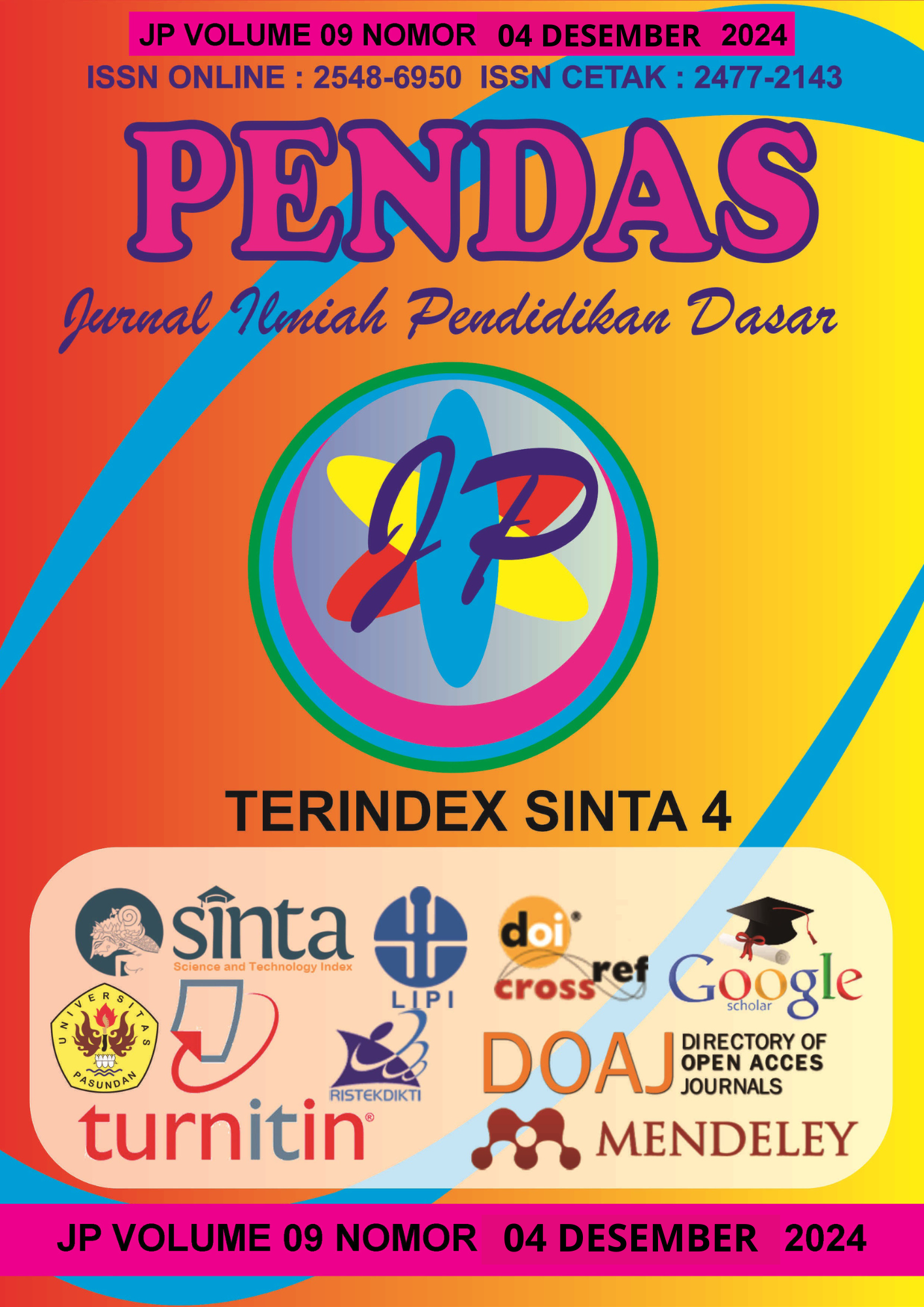RELEVANSI PENDEKATAN NEUROPSIKOLOGIS TERHADAP KEMAMPUAN MEMBACA ANAK DISELEKSIA
DOI:
https://doi.org/10.23969/jp.v9i04.20912Keywords:
Neuropsychological Approach, Reading Ability, Dyslexic ChildrenAbstract
In primary schools, neuropsychology is used to understand how children learn, interact and cope with academic or social challenges, as well as to identify and support children with learning difficulties or developmental disorders. Inclusive education for children with special needs must receive educational services that are in accordance with their needs and human rights. However, it is not uncommon for schools that claim to provide inclusive education to still discriminate against children with special needs. Therefore, the role of inclusive education, social parenting and humor-based multisensory teaching that has been implemented in Indonesia and Nigeria accommodates the needs of students with various backgrounds, including children with learning difficulties, reading children with special needs dyslexia.
Downloads
References
Azorín, I., Estefanía; Martin-Lobo, Pillar; Vergara-Moragues, Esperanza; Calvo, Ana. (2018). Neuropsychological Program of English Learning for Students with Dyslexia. Electronic Journal of Research in Educational Psychology, 16(45), 417-445. Retrived from https://ojs.ual.es/ojs/index.php/EJREP/article/view/2100/2659
Cantarelli, C. C., & Genovese, A. (2023). Innovation potential of megaprojects: a systematic literature review. Production Planning and Control, 34(14), 1350–1370. https://doi.org/10.1080/09537287.2021.2011462
Coskun, Z. N., & Mitrani, C. (2020). An Instructional Design for Vocabulary Acquisition with a Hidden Disability of Dyslexia. Cypriot Journal of Educational Sciences, 15(2), 305–318. https://doi.org/10.18844/cjes.v15i2.4671
E.C. Law et al., (2023) “Associations Between Infant Screen Use, Electroencephalography Markers, and Cognitive Outcomes,” JAMA Pediatr., vol. 177, no. 3, p. 311, Mar., doi: 10.1001/jamapediatrics.2022.5674.
Huang. Y. et al (2020) Personality, Behavior Characteristics, and Life Quality Impact of Children with Dyslexia, International Journal of Environmental Research and Public Health Int. J. Environ. Res. Public Health 2020, 17, 1415; doi:10.3390/ijerph17041415
Hagtvedt, L. P., Dossinger, K., Harrison, S. H., & Huang, L. (2019). Curiosity made the cat more
creative: Specific curiosity as a driver of creativ- ity. Organizational Behavior and Human Decision
Processes, 150, 1–13
Iwuagwu A.O et al., (2022) An exploration of primary caregivers’ knowledge of dyslexia, awareness of the problems, and supports for elementary school children in Nigeria Cogent Social Sciences (2022), 8: 2132673 https://doi.org/10.1080/23311886.2022.2132673
Jia, M., Stevenson, M., & Hendry, L. (2023). A systematic literature review on sustainability-oriented supplier development. Production Planning and Control, 34(8), 727–747. https://doi.org/10.1080/09537287.2021.1958388
J. Tudge and E. M. Rosa,(2020) “Bronfenbrenner’s Ecological Theory,” in The Encyclopedia of Child and Adolescent Development, vol. 6, no. 2, Wiley, pp. 1–11. doi: 10.1002/9781119171492.wecad251.
Justice, L.; Logan, J.; Kaderavek, J.; Schmitt, M.B.; Tompkins, V.; Bartlett, C. (2015) Empirically Based Profiles of the Early Literacy Skills of Children with Language Impairment in Early Childhood Special Education. J. Learn. Disabil., 48, 482–49
Karam, R. T., et al., (2023). Child Cognitive Development And Parent Roles: A Preliminary Comparison Of Moroccan Parents To United States And United Kingdom Benchmarks. Journal Of Child And Family Studies. Https://Doi.Org/10.1007/S10826-023-02542-Y
Perea, M., Panadero, V., Moret-Tatay, C., & G´omez, P. (2012). The effects of inter-letterspacing in visual-word recognition: Evidence with young normal readers and developmental dyslexics. Learning and Instruction, 22(6), 420–430. https://doi.org/10.1016/j.learninstruc.2012.04.001
Tilanus, E.A.T.; Segers, E.; Verhoeven, L. (2019). Predicting responsiveness to a sustained reading and spelling intervention in children with dyslexia. Dyslexia, 25, 190–206 https://doi.org/10.1002/dys.1614
Yuliasari, H., & Kusuma, R. M. (2023). A Systematic Literature Review: Commitment and Job Satisfaction Towards the Performance of Public Health Centre Cadres.
Warsihna, J., Ramdani, Z., & Felisima Tae, L. (2021). The measurement of science teaching efficacy belief instrument (STEBI): Sustaining teacher’s quality. Psychology and Education, 58(3), 2972– 2979.
Widodo. A et.al. (2020). Proses Identifikasi Peserta Didik Berkebutuhan Khusus Di MI NW Tanak Beak Kabupaten Lombok Barat.’, Progres Pendidikan, 1.2 , 63–71 http://prospek.unram.ac.id/index.php/PROSPEK/article/view/10/11
Widodo et al. (2020) The Effectiveness of Gadget-Based Interactive Multimedia in Improving Generation Z’s Scientific Literacy, Jurnal Pendidikan IPA Indonesia, Vol 9, No 2 (2020) https://journal.unnes.ac.id/nju/jpii/article/view/23208
Wong, A. M., Ho, C. S., Au, T. K., Mcbride, C., Ng, A. K., Yip, L. P., & Lam, C. C. (2017). Reading comprehension, working memory and higher-level language skills in children with SLI and/or dyslexia. Reading and Writing, 30(2), 337–361. https://doi. org/10.1007/s11145-016-9678-0
Downloads
Published
Issue
Section
License
Copyright (c) 2025 Pendas : Jurnal Ilmiah Pendidikan Dasar

This work is licensed under a Creative Commons Attribution 4.0 International License.



















